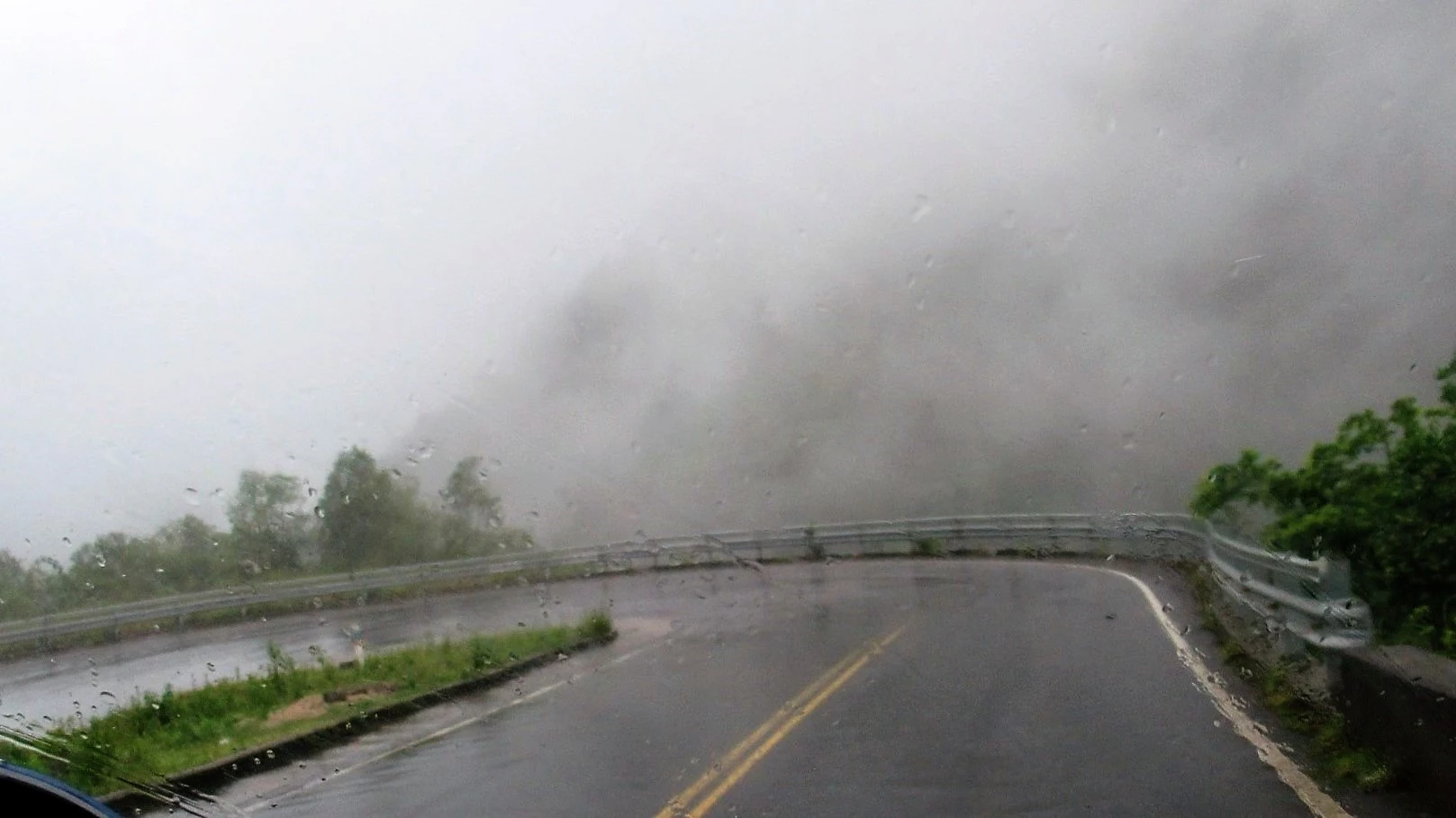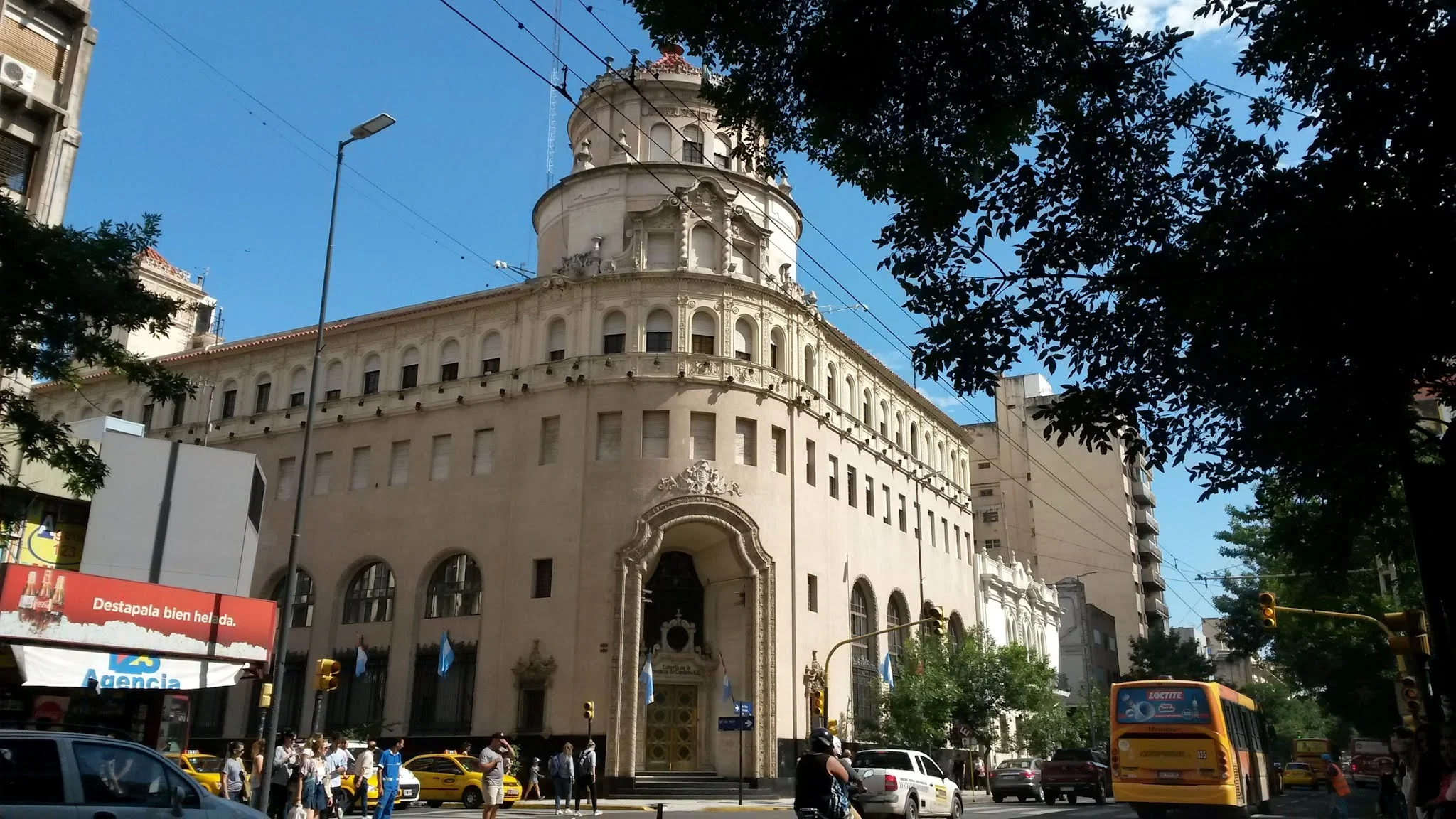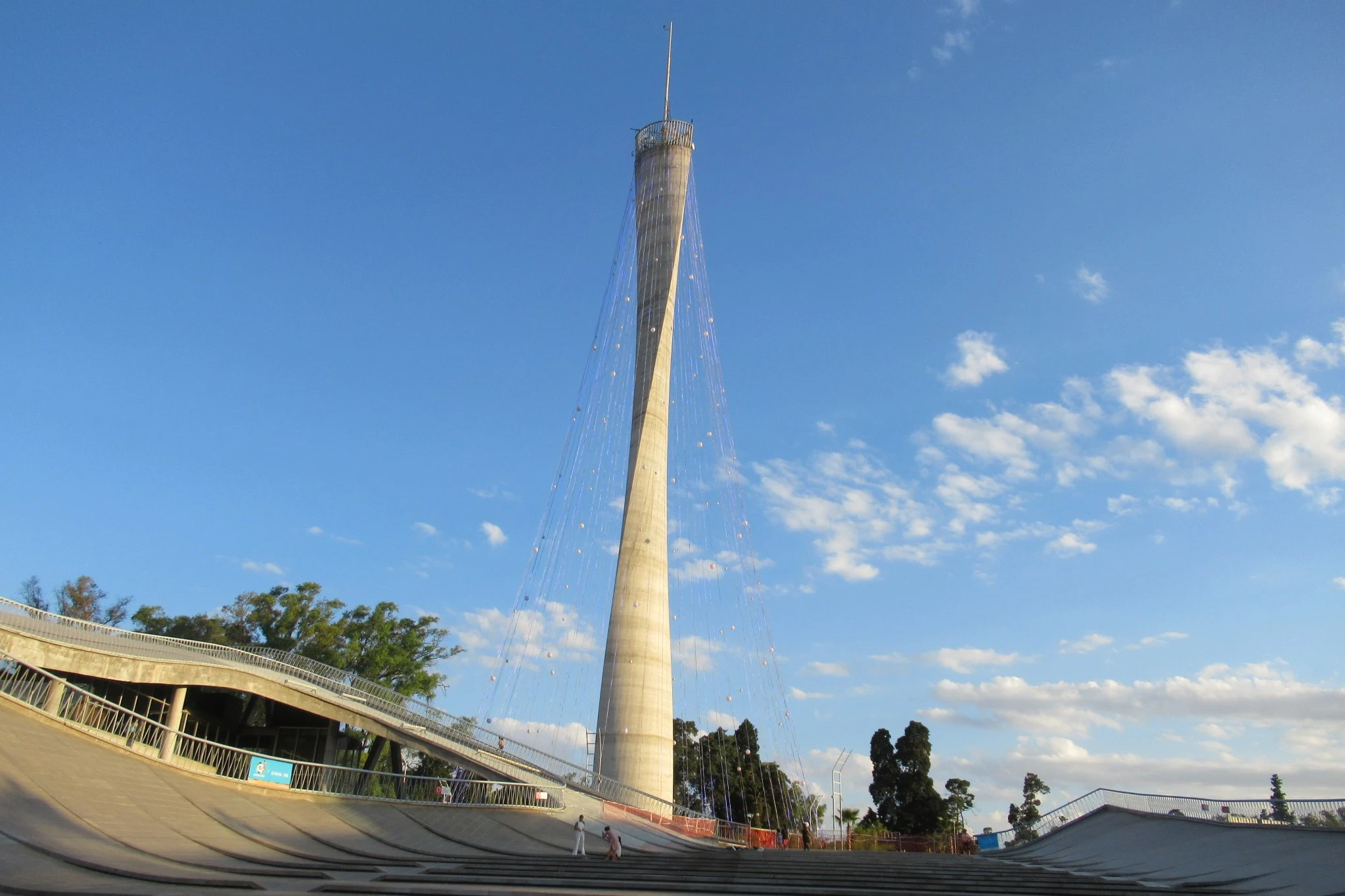After a few days in Cafayate in the Salta region of north-west Argentina, we drove south on Ruta 40 in our motorhome Vdos. About an hour into the drive, we turned south-east onto the Abra del Infiernillo, aka Ruta 307. This is a high mountain road that links Argentina's Tafí and Calchaquíes valleys, taking us 3,056 m (10,026ft) above sea level......and boy, what a road!
 |
| The shocking and high Abra del Infiernillo at 3,056 m above sea level |
It was mostly paved (badly) but with gravel in parts, very narrow, and had dozens and dozens of curves and hairpin bends. But it was also very scenic.
The Abra del Infiernillo is the highest passable point in the Tucumán region of Argentina, and very isolated except for a few shepherds and farmers. There is also a lot of cacti, and they were just beginning to flower, showing us their snowy buds.
 |
| Cloud on the road at the high altitude of the Abra del Infiernillo road, Argentina |
Near the peak of this route, we spotted what looked like thick smoke
across the road, that obliterated everything beyond.
As we got closer, we realised that it was a cloud. By the time we caught up to this dense mass, it completely covered the road and surrounds. We slowed right down,
afraid to hit one of the many animals that wander the roads in these parts.
We should have expected the cloud I guess, as the road climbs to over 3,000 m above sea level, but it was so dense, it took us by surprise.
 |
| Driving into Tafi del Valle, Argentina |
We eventually emerged from the cloud and drove into Tafi del Valle, a town of around 15,000 people near the centre of the Tafi Valley.
After lunch in Tafi, we were back on the Abra del Infiernillo still driving south. It took us down the mountains through a steep and verdant river gorge, bound by vertical cliffs.
There were more animals on this narrow winding road, plenty of hairpin bends, and more cloud.
 |
| The wet, winding and dangerous RP307 (Abra del Infiernillo) out of Tafi del Valle, Argentina |
The cloud had obviously dumped a lot of moisture there, and the road was very greasy, and felt dangerous.
Half way down the mountain, we took a quick break at the El Indio lookout which should have given us a view over the valley. But the cloud cover was too thick to really see anything.
The lookout apparently got its name because of the interesting 6-metre-high statue of an Indian. It was created by a local sculptor, and its official named is “El Chasqui”, after the messengers of the Inca Empire.
 |
| Road through the salt flats near Quilino, Argentina |
Arriving on the plains sometime later, we ended up on a dead straight road which ran for many kilometres, through pink-coloured salt flats.
They are known as Salinas Grandes and Salina de Ambargasta. Talk about a land of contrasts – cloud covered mountains, dry semideserts, verdant valleys, and salt marshes - four different
environments over 7 or so hours of driving.
 |
| Our overnight free-camp in Quilino, Argentina |
By now we were quite tired, so looked for a place to park overnight. We eventually found a spot behind a fuel/truck stop in the town of Quilino - and it was free.
The next morning, we continued south to the town of Jesús Maria where we had planned to visit some Jesuit estancias (mission stations). The estancias are religious, educational and agricultural missions built by the Jesuits between 1604 and 1767. Six of them are now UNESCO World Heritage Sites and we wanted to see them.
 |
| Leigh at Jesuit Mission Information Centre, Jesús Maria, Argentina |
After arriving in Jesús Maria, our first stop was the Mission Information Centre.
But getting here had been a mission in itself. We'd spotted a sign to Estancia Santa Catalina, and followed it thinking it a shortcut. But after bumping about on the unpaved and potholed road, we decided to return to the main road, not wanting a repeat of our experience in Chile on very bad roads.
However, we discovered that, from the Mission Information Centre we could get to three of
the four mission stations that we were most interested in. That
meant we could do those now, then drive further south to Córdoba to see the last one later. So, with mission map
in hand, we set off.
The first one was right next door to the Mission Information Centre. It was Estancia de Caroya, established in 1616 and set in lovely park-like
grounds.
Walking in, we found a very attractive building set around a
courtyard, that had some rooms restored and in use as a museum.
After a wander around there, we headed back to our motorhome Vdos, and raced to the next mission before it closed for lunch.
 |
| Jesuit mission Estancia Santa Catalina (UNESCO), Jesús Maria, Argentina |
It was Estancia Santa Catalina, the mission we had tried unsuccessfully to reach earlier by taking a shortcut. We were told that the road from Jesús Maria to this mission was
sealed, unlike the shortcut we'd tried, so off we went.
Unfortunately, the sealed road became another nasty
bumpy unsealed road. However, we pressed on as it was obviously a road used by
many locals if the passing traffic was anything to go by.
We finally reached the mission – it was closed – and well before the advertised time. But we looked around from the outside and liked seeing the beautiful baroque style church that fronted the mission buildings.
Next door, was a little home/B&B/restaurant which was open, so we stopped for lunch. It was in a delightful setting and we enjoyed a local-style meal. There was no menu, you just ate whatever was being
prepared that day, and it was a huge and very tasty steak Milanese.
After lunch we headed to our next mission, which was Estancia Jesús Maria back in the town of the same name.
Estancia Jesús María became known for its wine production, which has continued to this day. We weren't planning to do any tastings but made a mental note to look out for it in the shops.
Arriving at the Jesús María mission, we found a very attractive structure, and in the style of most other missions we have seen, it was built around a central courtyard and flanked by an interesting church. It had also been turned into a museum.
Our mission to find missions almost done, we
headed into the city of Córdoba to view the last of our four.
We arrived into Córdoba city at siesta time. Great - more parking spaces available as people go home for siesta. We found a car park but the parking ticket
machine wasn't working. We left Vdos there anyway, and went to explore the city
on foot.
 |
| Jesuit mission Manzana Jesuítica chapel (UNESCO), Córdoba, Argentina |
We soon found the Manzana Jesuítica (Jesuit Block), the last of our UNESCO sites, right in the heart of the old city. Taking up a whole city block, the site includes the Church and various related residences, offices and libraries.
After a good wander around there, we went in search of a place that could fix Leigh’s cellphone which went completely belly-up somewhere in the middle of Chile a few weeks ago. Córdoba was the first big city where we thought we might find a place to get it fixed.
We found a small shop that had a ‘no-fix-no-pay’ policy, and left it there.
 |
| Historic Provincial Savings Bank, Córdoba, Argentina |
After that, we did a bit more sightseeing, enjoying the old city and its historic buildings.
Much later, we drove around looking for a local camping ground for the night, as we had to return to collect Leigh's cellphone the next day. But there were none open. Each one we tried in Córdoba said they
would be open on 24th Dec, but we were there on the 6th!
Eventually, we drove way out to the suburbs of
Córdoba, and found parking in a street beside a park with a river running through
it. Perfect. It was very quiet and shady, which was important in the 38-degree heat.
 |
| The tall Faro del Bicentenario,Córdoba, Argentina |
Arriving back in the city the next day, we
followed instructions to a parking site which was used by the
police for their vehicles. It was in a great location, right opposite Córdoba's Faro del Bicentenario, and a short walk into the city centre.
Leaving Vdos there, we walked down into the
centre.
We found a laundry on the way and left some
washing there, then we went to pick up Leigh's phone. It turned out to be not fixable (300
photos lost!). After consoling ourselves, we set off to explore more of this
interesting city.
 |
| Marg enjoying the shade beside La Cañada Canal, Córdoba, Argentina |
We found some lovely shaded walks beside the main canal, and enjoyed seeing local architecture. While Córdoba's architecture is not as grand or eclectic as in Buenos Aires, we still found it interesting with a few renaissance and other European architectural styles adorning the streets.
Fortunately, despite the city's growth, much of the historical Spanish colonial architecture is still standing.
 |
| Beautiful interior of the Basilica de Santo Domingo, Córdoba, Argentina |
We popped into admire the artworks in most of the churches, but particularly liked the beautiful interior and decorative cupola of the Basilica de Santo Domingo.
Other places we enjoyed were the Plaza San Martín, the Town Hall, Palace of Justice, Plaza Italia, the La Cañada canal area, the Plaza de la Intendencia, and more.
 |
| Plenty of plazas and shade trees in Córdoba, Argentina |
There are many museums, monuments, plazas, green spaces, huge shade trees, a fabulous coffee/bar/restaurant scene, and plenty of pedestrian-only areas. It is a very attractive city.
After walking around for hours, we found our
way back to the right place to pick up our laundry, then slogged up a long hill back to Vdos.
 |
| Our last night in Córdoba in the police car park |
We decided to stay in the police car park that night,
feeling perfectly safe there.
After a good night's sleep, the next morning we headed south-east out
of Córdoba. We had to return our rented motorhome Vdos, by 11 December, so it was all go to get to Buenos Aires to do that.
On the way, we stopped briefly in Rosaria, the 3rd largest city in Argentina with a population of around 2 million. We found it to be an attractive city, built along the banks of the Paraná River.
The old city was set on a hillside
with narrow streets and some lovely historic, as well as modern buildings.
By now, it was late in the day and again, we were looking for an overnight parking spot. Not finding one, we decided to push on to get closer to Buenos Aires for the night, and eventually found a YPF service station
on the other side of Rosaria. It was off the freeway with a lovely grassed and shady area, and we slept well.
The next day we reached Buenos Aires, and
drove through the city to find a camp somewhere close to Motorhome Times where we'd rented Vdos.
 |
| Vdos at the campsite, Chascumous, Argentina |
We ended up returning to the camp in
Chascumous that we used when we first picked up Vdos. The camp manager
recognised us and was excited to have his two Kiwis back again.
Our stop there gave us a chance to pack up our
gear, prepare Vdos for her return, and have some relaxing time before our next
adventure.
We were sad to say goodbye to Vdos. She had
been an easy van to drive and had taken us everywhere we had wanted to go, as
well as a few places we didn't!
 |
| Returning Vdos to Motorhome Times depot, Buenos Aires, Argentina |
We were very happy with her living space and
her performance. She had 139,768 km on her odometer when we
picked her up. We travelled 13,196 km during the 2.5 months that we had her, so
she’s sure got a few km on her.
We highly recommend Motorhome Times. They were
easy to deal with, and Vdos must have been well maintained by them as we had
absolutely no problems with her, even though we'd driven on some of the world's worst but famous roads.
 |
| Colourful sights in Chile, Argentina and Patagonia |
Overall, we a great time in Chile, Argentina and Patagonia. All different, all colourful – Chile with its abundance of colourful foliage, Argentina with its colourful soils, and Patagonia with its beautiful coloured glaciers. There were lovely and not so lovely cities and towns, but everywhere we went, the people were charming, friendly and warm.
This motorhome trip has been one of our hardest,
largely due to the lack of, or closed campgrounds and their poor condition, the extremely windy and cold weather in Patagonia, and the rough roads. But would we do such a road trip
again? You bet – it was a fabulous trip!
Our next stop is Antarctica; but not in the
motorhome....
The above blog is part of our 4-month tour of South
America. The first blog on this tour is called "Buenos Aires here we come".



